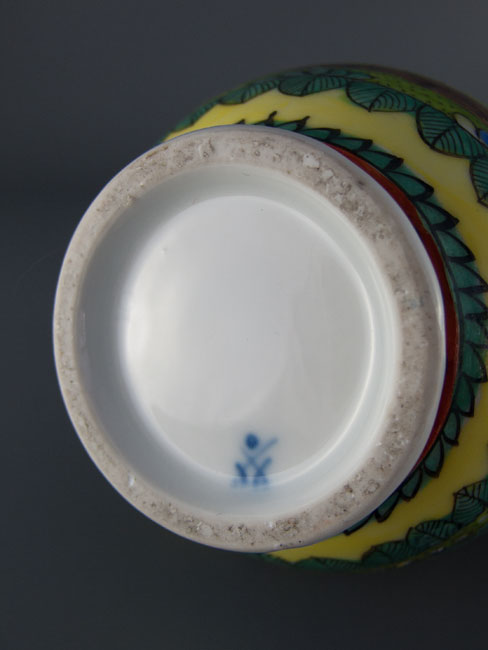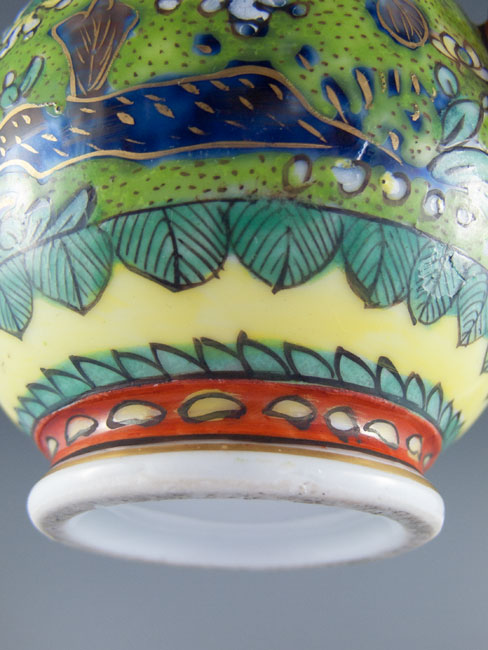A Meissen Hot Water Jug, circa 1740
This jug was originally decorated in underglaze blue with the Fels- und Vogel (Rock and Bird) pattern in which a bird is depicted above stylised rockwork and flowering branches. As the fairly simple blue design could be greatly embellished with the addition of gilt and enamel decoration, the pattern was popular with the contemporary Augsburg gilders, and the Thuringian Hausmaler enamelling workshop of F.J. Ferner is known to have favoured this design.
The spout has a heart-shaped aperture and the handle is of a Baroque scrolled form.
The base bears a rare early crossed swords mark with, between the blades, a dot or O in underglaze blue, and incised Dreher’s marks. Examples are recorded of blue-painted wares from the period 1730-50 bearing crossed swords marks enclosing a ring, dot or circle between the blades. (See Christies, Amsterdam, 15 May 2002, European Ceramics, Dutch Delftware and Glass, Lot 175, for an oval tureen and cover; and Christie’s, London, 25 November 1991, British and Continental Ceramics, Lot 328, for a pair of leaf-shaped pickle dishes).
At some time between 1780-1830, the original underglaze blue pattern was completely overdecorated in England with a Chinese-style dragon on a green seeded ground.
This rich decoration was particularly favoured by the Regency elite during the early part of the 19th century. At this time, the Prince Regent, later King George IV, was cultivating a vogue for the exotic orient with flamboyant projects such as the Royal Pavilion at Brighton.
Condition: No damage or restoration. From manufacture, there are small clay tears in the paste inside the spout. Also, when it was overdecorated in England, the artist left a couple of thumbprints from handling the jug whilst painting.
Dimensions: Height 12.7 cm
18th-Century German Porcelain, George Savage (Rockliff, 1958).


















